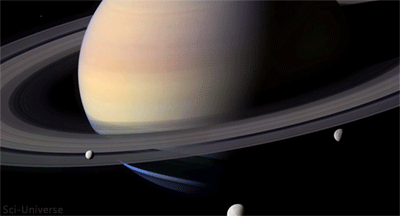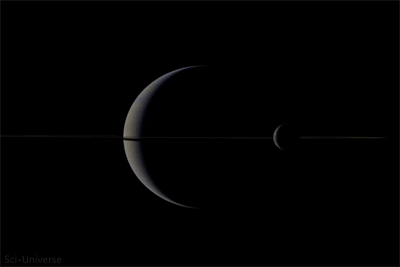




via sci-universe:
The glory of Saturn.
(Materials provided by ESA, NASA, ASI)I feel like Cassini! Whoosh, flying through the outer solar system!
Speaking of Cassini, that wonderful robotic planetary explorer recently captured this view of a 200 mph hexagonal hurricane on Saturn’s pole, which may be hundreds of years old, each side of which is larger than the entire Earth:
As for why this massive hurricane is hexagonal? That remains somewhat of a mystery, although it is likely due to some strange standing wave fluid dynamics in Saturn’s gaseous atmosphere.
